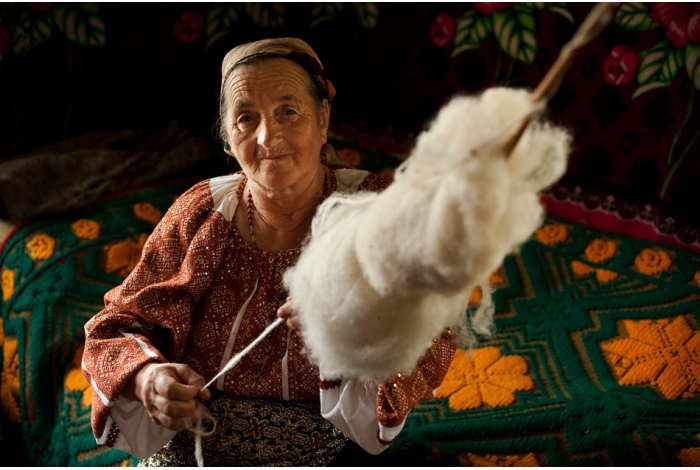Facing the Future While Preserving the Past
My first impression of Romania was gleaned during the car trip from Bucharest airport to Brasov as we sped down a highway edged in dust, alongside which prowled the occasional scrawny dog.

Moments from a Romanian weaver's life. Photo by Vlad Dumitrescu
As we passed through various towns, my eyes caught on images that revealed the divergent nature of the country I had just entered. To the left, I glimpsed the golden arches of a McDonald’s for a moment, only to turn to my right and set eyes on a small horse-and-cart ambling its way onwards. Here and there small wooden stalls would appear by the roadside, where farmers were selling their produce to those who passed by, when only meters away construction workers and machinery were holding up the traffic as they upgraded the roads. Scattered around me were visible signs such as these of the old and the new existing side-by-side, of traditions and ways of the past that are surviving within the rapid modernization that is sweeping through Romania.
I am from Australia, a country largely composed of immigrants and families who are only 2nd or 3rd generation Australian; there are not many Australian traditions or customs practiced by the whole populace, outside of a widespread love of BBQs and AFL (the Australian Football League). It is very much a ‘young’ country, still in the early stages of developing a national identity.
This is not so for Romania – already on that first car trip I saw that, despite its increasing modernity, there were echoes of the past throughout present-day Romania. It was very intriguing for me to perceive this strange combination of old and new, and to then observe the many Romanians who seemed to take it for granted that a man could park his horse-and-cart next door to a Dacia in the supermarket’s parking lot!
It is this, the strong influence of the past and of tradition, that makes Romania special to me. As an Australian I may struggle to pin down what is truly ‘Australian’ in nature, but the sight of an elderly woman wearing her headscarf and apron, the burn of a shot of Palinca at dinnertime or the beautiful painted icons within a Romanian Orthodox Church, these things are all distinctly Romanian because they have been a part of life in this country for generations.
Nevertheless, we live in an increasingly modern and technological age, and it is becoming harder to keep the new from swamping the old. People spend so much time looking forwards towards the future that they sometimes forget to look back and appreciate the traditions of those who have gone before.
This is what the ‘Satul’ magazine is about, preserving the old ways; from famous traditions such as weaving or shepherding right down to the humble art of cooking zacusca.
by Katherine Clinnick




